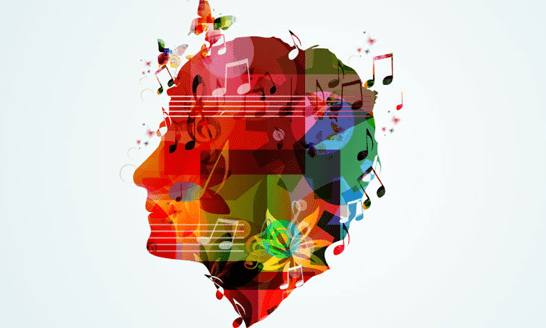I believe that transcribing music is the secret superpower we never knew that we had.
It’s widely underrated and under-utilised, despite its incredible ability to boost the musicianship of everyone that uses it, tenfold.
Don’t believe me? Read ahead, and soon you’ll see the myriad of benefits that transcribing music can offer (that is, if you take the necessary steps to do it right!).

What Is Transcription?
First, (for those of you who don’t know), what is transcription?
-Transcription is simply the conversion of an aural format into a visual one (that is, music to text and symbols).
-We use music notation to convert what we hear into visual representations of the notes, or chords, on the musical staff, and denote their duration, or time, by using different shapes for different time values.

-We generally also use a key signature to help the musician reading the sheet more easily identify the key the piece is in, and adapt themselves accordingly.
The Benefits of Transcribing
I simply can’t list all of the numerous benefits that transcription of music has for your improvising, listening, and writing skills, but here are a select few:
1. In its essence, the conversion of an audible medium to a tangible, physical form provides a ‘map’ of sorts for the compositional/ improvisational style of the artist you are transcribing; this allows you to visualise their sound and notice patterns and habits in their playing that you can then adapt into your own style.
2. Forget tedious interval naming and ear training, transcribing music allows you to internalise intervals, scale degrees, chord qualities and a number of other musical features, and in doing so out, permanently train your ear to instinctually recognise the sounds of intervals and chords.
3. Huge practicality: If you’re ever in a situation that involves learning songs with little to no notice, I guarantee you that having the prior knowledge of transcription will almost certainly give you the upper hand when it comes to learning and internalising music.
4. Transcribing is a great way to dive headlong into learning a new genre, instrument, or style: having a concrete reference of the music allows you to SEE the devices that are hallmarks of the style, and how they apply to a wider musical context
5. And finally, transcription almost automatically improves your personal writing and improvisation. Hearing music and manually figuring it out (whether you know it or not) imprints said music into your subconscious mind; the music you have covered will manifest itself in your individual sound.

Transcription Tips and Hacks
Here are a few hacks to help supercharge your transcribing powers:
1. The first thing you’ll want to identify is the overall tonality of the piece (E.G B major, D minor, F# mixolydian, etc.) this way- whereas you previously had 12 possible note choices for the note you’re looking at- you can now narrow that choice down to 6 or 7 notes. This should generally be written out as a key signature on your score.
2. Building on the last tip, it’s often also helpful to narrow down whether the next note goes up or down, by step or by leap. Yes, pretty simple, but this will often help narrow that pool of 6 notes down even further into just 4 or 5.
3. If you’re trying to figure out the chords of a piece, always listen to the bass for the roots of the chord. Try identifying the note name of the chord first (e.g ‘this is A something), and then comparing it to your key, which will most likely tell you the chord quality. Most extensions/ alterations to chords can generally be found in the upper register, so picking those higher notes out is easier than you think.
4. If possible, transcribe with a pen and paper. Science has linked the physical act of writing with a much greater retention of information, as well as enhanced digestion of material. So, for maximum impact, always have a pencil and paper ready!

What To Look For When Transcribing
Here are some key points you’ll want to look out for whilst transcribing:
-The key the song is in (key changes, modal interchange, etc.)
-Scale types the soloist is using, and how they apply to chords
-Find arpeggios the soloist is using (are they outlining the chords? Are they creating extended/polychords?)
-Articulations/technique (What articulations are hallmarks of the solosist’s style? Legato, bends, rubato, etc.)
-Odd/dissonant rhythms, time signature changes
-General shape/contour of the melody
-Structure (A section, B section, etc.)
So, How do I start?
All you need is a pen, some music paper, and an instrument of your choice.
- Transcribe your solo; try and make it as accurate and faithful as possible to the original (including articulations, special markings, etc.)
- Try your best to find the chords that underly the solo, and look at the solo’s relation to them (consonant, dissonant, chord tones, non chord tones, etc.)
- Reference the key features above, and try and find them in your own transcription. If possible, highlight each one in a different colour
- From the information above, try and create an overall perspective on the style of the musician, you’re looking at, including their most prominent features and habits musically
- Choose 2-3 of these concepts and try to recreate them in your own playing as best you can.
Don’t feel bad if you initially struggle with the process of transcription. Remember, all great transcribers once started out much worse than you, and transcribing gets exponentially easier the more you practice it. Plus, if all else fails, it’s a great party trick!
So, choose a song, sit down, and start transcribing today.
Want the free Ultimate Prog Chord Compendium? Just sign up below!
Further Reading
Justin Guitar-The Transcribing Process:
Jazzadvice- Tips on Transcribing: https://www.jazzadvice.com/before-you-transcribe-or-learn-tunes/
Discmakers- Transcribing Solos Can Help You Improvise: https://blog.discmakers.com/2016/05/transcribing-solos-can-help-you-improvise/